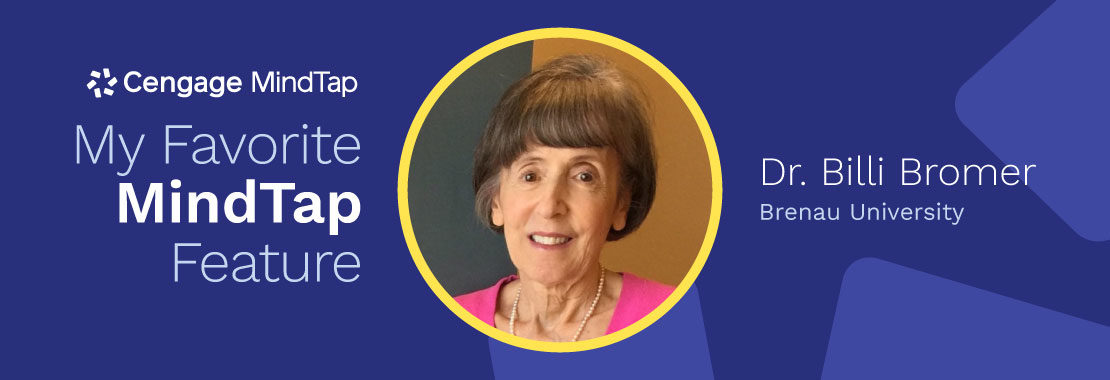Dr. Billi Bromer is a professor of Education at Brenau University
As a fully online instructor who uses the Canvas Learning Management System for my courses, what I love most about using MindTap is the opportunity to deep link MindTap assignments directly in my Canvas course.
Everything students need is in one place. Students do not have to leave the Canvas course to read an eText or use the digital resources I’ve included. This saves students time and makes a course less confusing. For the ever-increasing numbers of non-traditional students who now complete online courses, simplicity is not only a time saver—it’s a confidence builder.
The Digital Resources I Use Most in My Canvas Courses
I’ll use my Canvas course in Developmental Psychology as an example. This course has a large amount of content and MindTap provides multiple ways for students to learn it.
Flashcards
I like providing flashcards because they help students study and learn key terms and course concepts. Each card has a word or phrase on one side and the definition on the other side. Students can click on the card and then flip it over to learn a term or concept. Then they can go back to self-assess and determine if they have actually learned the term. Students can view the word or phrase side and try to define it in their own words, or they view the definition side and identify the term it is describing.
Quizzes
Another way students can acquire the content and self-assess is through the Did You Get It? quizzes. Quizzes can be pre-set for more than one attempt so students can check their level of learning, go back and study a bit more, and re-assess. The Did You Get It? quizzes can also be set for earned points and used as low-stakes assignments. Including the Did You Get It? quizzes regularly not only provides practice for students but also gives them a chance to earn points toward their grade in a lower-stress format.
Video Cases
In addition to MindTap digital resources that help students learn content and assess their own progress, there are digital assets that further enhance the content and provide the theory-to-practice application I want for the course. The video cases provide short real-life examples of how the content is practically applied. For example, students may learn about a topic such as “memory.” The video case will provide a short clip about rehearsal strategies that can be used to increase student memory.
Another useful aspect of the video cases is that each video comes with questions to which students can reply directly in MindTap. As with the other digital resources, each video case is deep linked into the Canvas course. Students can move directly to each video case to view the video and reply to the questions.
I would be remiss if I didn’t mention the instructor grading process where grades from MindTap sync directly into my Canvas course. When I grade student video case responses in MindTap, the points or percentages I have assigned to each student are also recorded in Canvas. I don’t have to go back to Canvas to record points in Grades. They are automatically posted.
Digital Resources for a Customized Course Experience
The user experience of MindTap deep linked into Canvas is positive for both the student and instructor. Instructors can individually select MindTap digital resources for a Canvas course for the best application to the course objectives. They can use as many or as few resources as they feel are useful. The ease with which the digital resources can be deep linked in a learning management system provides a customized course that is uncomplicated for both students and instructors to manage. It’s a win for everyone!
Want to know about other instructors’ favorite MindTap features?

